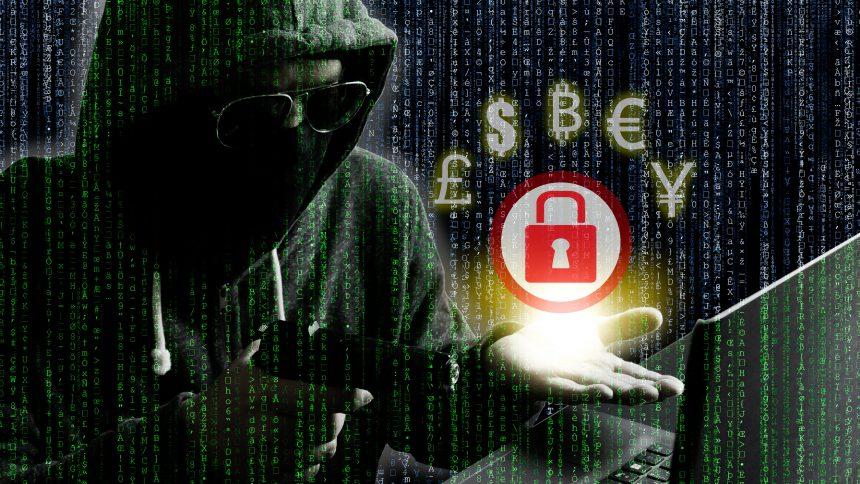Ransomware is a type of malicious software designed to block access to a computer system or files, often by encrypting them, until a ransom is paid. This form of malware has become increasingly prevalent, targeting individuals and organizations alike. Among the myriad ransomware variants, NotLockBit stands out as a significant threat, leveraging sophisticated techniques to infiltrate systems and demand exorbitant payments for file recovery.
The Threat: NotLockBit Ransomware
NotLockBit is a particularly insidious ransomware variant that encrypts files on the infected system, rendering them inaccessible. Once executed, it typically spreads through phishing emails, malicious attachments, and exploit kits that take advantage of software vulnerabilities. Cybercriminals often use social engineering tactics to trick users into downloading the ransomware, posing as legitimate software updates or important notifications.
Upon installation, NotLockBit performs a series of actions that compromise the integrity of the infected system. It first scans the system for specific file types, targeting documents, images, and other critical data. After identifying these files, it employs advanced encryption algorithms to lock them. It renames files using the following format: [original file name].[initialization vector].abcd. For instance, it renames “1.jpg” to “1.jpg.3544329bb141eea628f7c3bff6c79c11.abcd“, “2.png” to “2.png.c1f3b4d9f4c2eb1a6e7a9c3b7f1c2a92.abcd“, and so forth.
The consequences of a NotLockBit infection can be severe. Victims find themselves unable to access crucial data, leading to potential operational disruptions and significant financial losses. Moreover, the ransom demanded by the attackers can range from hundreds to thousands of dollars, with no guarantee that paying the ransom will result in the recovery of the files.
NotLockBit’s text file (“README.TXT“)
DECRYPT_KEY:aW43ZEZLTzJVUHdsSnI1WU16c3o5Z0hJYUN4Mk1LQUFtY0t2K1p mSGVKKy9mVTFr0WV2RXkrQlgwUTUxNXBSWkUyUnhGVG9jMFFBanp6SzJzM0xxUW pXcFdSRGp2clUyRks1a2hIZEpaMTJWc1IzRXpUcmI3QVpybVRkZTd4YUXTjRuK ZBSKORGRGRRT3F0NU9IUGhvVEdLTDM5MzNOVkdm0ElIZzJnUUk4STZwaFg1Y1ZD WHZ0c2hZMTRhZlZZUit6aVZqRUhJZVIvQ2RSWHF1RmFZNUxYU3kyZjIrMDc5RWZ LN2N5NKZ1UU5FcHNQSjdCVzNwazAwVnJ2MmRWaTVUTVc5SnF2a3B0MTMycWRLQ2 RvK2pJem1xNjBIcnBNKzdkQ2hiVVMv0WLVVWVvVXJSMkZVeXVvRLZiR3dFT3hBS 3F6NDhDQmp LNLkwUkR0cWVINGZnPT1rYXJvbGlzbGl1Yzg3NWMKe3dpbmRvd3Mg d2luZG93cyB3aW5kb3dzIFdpbmRvd3MgMTEgUHJvIDEwLjAgMTAgMCAwIDIyMDA
WLj cwOCB9CmZkMzJlMzFULTEyNmMtNDU4NC1hYTLmLWM2ZDRiZDLhNWM20A==
Purpose and Functionality of Ransomware
The primary purpose of ransomware like NotLockBit is financial gain. Cybercriminals utilize this malware to exploit vulnerabilities and lock users out of their systems, effectively holding their data hostage. The infiltration typically occurs through deceptive methods, such as malicious email attachments or compromised websites. Once installed, NotLockBit poses significant threats to both the infected system and the individual or organization behind it, leading to operational downtime, financial loss, and potential reputational damage. The term “ransomware” underscores the malicious intent behind this malware, as it demands a ransom for the restoration of access to critical data.
Symptoms of NotLockBit Infection
If you suspect your system may be infected with NotLockBit ransomware, watch for the following symptoms:
- Inability to access files that were previously available.
- The presence of new file extensions (e.g.,
.notlockbit) on your files. - Unusual system behavior, such as slow performance or frequent crashes.
- Ransom notes appearing on your desktop or in your files.
Detection Names
To confirm whether NotLockBit or a similar threat is present on your system, look for these detection names used by various security software:
- Ransom.NotLockBit
- Ransom.Win32.NotLockBit
- Trojan-Ransom.Win32.NotLockBit
- Ransomware.NotLockBit
Similar Threats
While NotLockBit is a notable ransomware variant, several similar threats include:
- LockBit: Another variant known for its rapid encryption capabilities.
- Conti: A ransomware strain that targets enterprise environments, known for its aggressive tactics.
- REvil: A ransomware-as-a-service model that has gained notoriety for high-profile attacks.
Comprehensive Removal Guide for NotLockBit Ransomware
Removing NotLockBit ransomware requires a systematic approach. Here’s a detailed guide:
Download SpyHunter Now & Scan Your Computer For Free!
Remove this and any other malicious threats to your system by scanning your computer with SpyHunter now! It’s FREE!
Step 1: Disconnect from the Internet
- Immediately disconnect the infected device from the internet to prevent further data transmission and additional infections.
Step 2: Boot into Safe Mode
- Restart your computer and boot into Safe Mode. This mode only loads essential system programs and services, helping to isolate the malware.
- For Windows: Restart your computer and press F8 before the Windows logo appears. Select “Safe Mode with Networking.”
Step 3: Use Anti-Malware Software
- Download a reputable anti-malware tool, such as SpyHunter. You can use the free version to scan for threats.
- Install the software and perform a full system scan to detect and remove NotLockBit.
Step 4: Restore Files from Backup (if available)
- If you have backup copies of your files, restore them after ensuring that your system is free from the ransomware.
Step 5: Seek Professional Help
- If the ransomware persists or you are unable to remove it, consider contacting a cybersecurity professional for assistance.
Step 6: Reinstall Operating System (if necessary)
- In extreme cases, reinstalling the operating system may be necessary to completely eliminate the threat.
Prevention Strategies
To prevent future ransomware infections, follow these best practices:
- Regular Backups: Maintain regular backups of your important files on an external drive or cloud service.
- Update Software: Keep your operating system and all software up to date to protect against vulnerabilities.
- Use Reputable Security Software: Employ a robust anti-malware tool like SpyHunter to provide continuous protection against threats.
- Educate Yourself: Stay informed about phishing techniques and avoid clicking on suspicious links or attachments.
- Network Security: Implement firewalls and other network security measures to block unauthorized access.
By following these strategies, you can significantly reduce the risk of ransomware infections like NotLockBit.
Conclusion
Ransomware such as NotLockBit poses a serious threat to individuals and organizations, causing data loss and financial harm. By understanding how this malware operates, recognizing its symptoms, and taking proactive measures, you can better protect yourself and your data. To enhance your security, consider downloading SpyHunter to scan your system for free and ensure your device remains safe from such threats.





